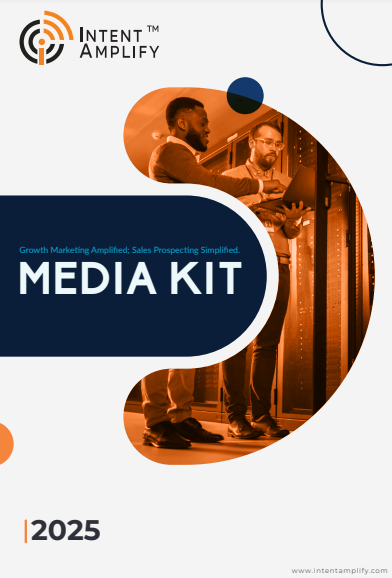
Freelancers, Agencies, Or In-House: Choosing The Right B2B Prospect Research Model
- Last updated on: July 7, 2025
B2B prospect research is the foundation of every successful sales and marketing program.
When attention is scarce and competition is fierce, understanding who to target – and the context behind their identity- can be the difference between missing quota and a predictable pipeline.
Prospect research is more than just a list of contact information. Prospect research is about uncovering buying signals, mapping account hierarchies, and understanding the context behind owners/decision-makers.
As outbound strategies have evolved, it’s no longer a question of “is prospect research a manual task?”, but rather, a vital function that feeds the machine of account-based marketing, sales enablement, and lead prioritization.
Whether you’re identifying your Ideal Customer Profile (ICP) or surfacing high-intent accounts, the richness of your research correlates to your conversions, deal velocity, and customer acquisition cost.
For B2B organizations in 2025, the challenge is no longer, “should we invest in prospect research,” but rather, “how do we build prospect research to scale?” They find themselves stalled at what they should be using: freelancers, agencies, or building the function?
This article helps you navigate that decision. We’ll evaluate each model, compare use cases, and explore which option fits your growth goals, budget, and operational complexity in 2025.
Why Prospect Research Matters Now More Than Ever
Today’s buyers are informed, skeptical, and time-poor. They expect personalized outreach based on their business context, not generic sales pitches.
That personalization starts with prospect research, gathering firmographic, technographic, intent, and behavioral insights that help you:
- Prioritize high-value accounts
- Tailor messaging to the buyer journey
- Improve outbound response rates
- Reduce customer acquisition costs (CAC)
- Accelerate deal velocity
Meanwhile, IBM reports that AI-powered prospecting, like personalized outreach and behavioral data, helps teams reach dramatically more prospects, automating data gathering while enabling reps to focus on closing deals.
So the challenge for B2B teams in 2025 isn’t if they should invest in prospect research, it’s how to structure it smartly: choosing between freelancers, agencies, or building in-house teams for scale and impact.
Understanding the Three Prospect Research Models
-
Freelancers: On-Demand Agility, but Limited Size
Overview
Freelancers provide a flexible, cost-effective means of addressing prospect research. Freelance professionals usually work on a per-project or hourly rate and are commonly hired from sites such as Upwork, Fiverr, or LinkedIn. They’re best suited to one-off activities or burst capacity when internal teams are at full capacity.
Benefits
Cost-effective: Well-suited for startups or SMBs who require results without a long-term financial burden.
Quick onboarding: Low ramp-up lets freelancers get to work quickly.
Niche expertise: Most freelancers work in specialized verticals or geographies, bringing specialized views to targeted campaigns.
Flexible use: Hire one or many freelancers based on current workload—no need for lengthy contracts.
Limitations
Quality variation: Quality of output is very uneven, often necessitating exhaustive internal QA.
Limited control: Late completion or aborted projects can jeopardize subsequent sales efforts.
Coordination overhead: Coordinating multiple freelancers within time zones or tools increases complexity.
Scalability problems: Freelancer-based models are operationally inefficient beyond a certain scale.
Best Fit
Freelancers work best for early-stage ventures, short-term bursts of prospecting, or campaigns that need tight targeting by geography, industry, or role.
Real-World Example
A German healthcare CIO-targeting SaaS startup employs a German-speaking freelancer to acquire and qualify 200 high-quality leads for a geo-targeted webinar campaign. It takes 48 hours to deliver, for less than $500, allowing for an accelerated GTM push without over-investing resources.
-
Agencies: Scalable Execution with Strategic Insight
Overview
Agencies serve as end-to-end partners for prospect research, providing organized data at scale with embedded strategy and automation. They integrate human researchers with software solutions, adding enrichment, intent data, and platform integrations to provide production-ready prospect lists for activation.
Advantages
End-to-end delivery: Agencies cover all research, validation, formatting, compliance, and integration with CRM.
Accelerated time-to-value: With pre-set workflows and tools, agencies can provide high-volume datasets efficiently.
Strategic alignment: Top agencies assist in refining ICPs, account segmentation, and even GTM targeting guidance.
Tech integration: Most agencies enable synchronization of data into CRMs, MAPs, and intent platforms for smooth workflows.
Limitations
Increased cost: Agency fees mirror their strategic contribution and service delivery, be prepared for higher rates.
Less flexibility: You’re bound to their approach, schedule, and data format, which hampers agility.
Contract commitments: Multi-month contracts might not be the best for teams with shifting priorities.
Potential overdependence: With time, excessive dependence on third-party partners can undermine in-house capability.
Best Fit
Mid-to-large B2B businesses benefit from agencies for ongoing, high-quality prospect data needed for multi-touch campaigns, outbound scaling, or ABM programs—and prefer strategic assistance rather than complete control.
Real-World Example
A cybersecurity company entering the North American energy marketplace hires a prospecting firm to provide 6,000 qualified leads to 500 target accounts. The firm constructs buying committees, uses threat-intent filters, and provides segmented CSV files connected to Salesforce every week.
-
In-House Teams: Total Control, Long-Term Worth
Overview
An in-house prospect research organization consolidates the whole operation into one place—aligning internal alignment, data stewardship, and GTM integration. In-house prospect research teams are usually part of sales ops, RevOps, or marketing and have direct access to the company’s CRM, MAP, and proprietary workflows.
In contrast to freelancers or agencies, in-house teams grow with the business, develop institutional knowledge, and refine prospecting efforts with real-time input from internal stakeholders.
Benefits
Ownership and alignment: Internal teams are closely aligned with sales and marketing objectives, allowing for quick pivots.
Data accuracy and integrity: Internal teams have ownership of the data lifecycle—deduplication, compliance, and ongoing enrichment.
Deeper personalization: With visibility into internal intent signals and campaign history, internal teams can deliver precision-targeted lists.
Knowledge retention: As researchers become familiar with your ICPs and GTM motions over time, they perform better.
Limitations
Increased initial investment: Standing up a competent in-house team involves recruiting, tooling, and training.
Limited burst capacity: Rapid scaling during campaign surges might involve the use of additional resources.
Ongoing overhead: Handling people, performance, and process necessitates constant monitoring.
Slower ramp-up: New teams need time to become operationally mature, particularly in complex GTM scenarios.
Best Fit
In-house teams work best in organizations with established GTM capabilities, extended sales cycles, high LTV customers, or industry compliance requirements. They deliver the greatest long-term ROI when prospect research is central to the business model.
Real-World Example
A $100M enterprise software firm develops a 5-member in-house research capability within RevOps. They map international buying committees across Tier 1 accounts, incorporate LinkedIn and product usage signals into lead scoring, and collaborate cross-functionally to feed real-time data into both marketing and sales. Outcome: a 28% increase in two quarters of sales-qualified leads.
Last Thought: Select for Fit, Not Only Speed or Cost
No model of prospect research is always better—each has a unique purpose based on your stage of growth, budget, and complexity of operation. Freelancers provide you with speed and cost. Agencies provide scale and strategy. In-house teams provide control and compounding value.
Most effective B2B teams recognize when to flip models—or even combine them—to have a robust, consistent, and pipeline-driven GTM rhythm.
Key Considerations in Selecting a Prospect Research Model
Choosing an appropriate prospect research model is not a one-size-fits-all approach. It varies with several variables that depict your company’s present capability, objectives, and growth path. The following are the main considerations in selecting the most suitable model for your company.
1. Organizational Growth Stage
The level of maturity of your organization has a strong bearing on the selection of a model.
Early-stage startups generally prefer the cost-effectiveness and flexibility of freelancers, particularly when speed and agility are most important.
Growth-stage firms tend to hire agencies in order to ramp prospecting efforts quickly and tap specialized resources.
Well-established businesses prefer to invest in developing internal resources to keep processes under complete control, data governance intact, and aligned strategically.
2. Budget and Return on Investment (ROI) Expectations
The financial planning of your business should dictate your investment in prospect research.
Freelancers tend to be the lowest cost upfront and best for teams with limited budgets. But the quality and quantity of output could be restricted.
Agencies cost more but they deliver higher ROI per lead if managed optimally and given corresponding campaign goals.
In-house teams are expensive in terms of capital investment but pay off in the long run with institutional knowledge and ownership of data.
3. Data Requirements Sophistication
How sophisticated your data requirements are is a key consideration.
For straightforward lead generation activities with simple firmographic segmentation (e.g., industry, company size, geography), freelancers could suffice.
When your campaigns have sophisticated segmentation, intent-based scoring, enrichment layers, or targeting multi-threaded buying committees, an agency or in-house team is more suitable.
4. Existing Technology Stack and Ecosystem
Your current sales and marketing technology stack can determine how well each model integrates with your operations.
If your team already utilizes platforms such as 6sense, Clearbit, or SalesIntel, building an in-house team can offer greater control over tool usage and data workflows.
Agencies, by contrast, often bring proprietary data solutions and tech integrations, reducing your dependency on internal tooling but potentially creating external dependencies.
5. Time-to-Value and Urgency of Needs
How quickly you need quality leads also influences your choice.
Whether you need to generate lists urgently or assist with an urgent campaign, agencies or freelancers are best placed to produce results in a hurry.
Whether you are concentrating on creating a sustainable, long-term pipeline engine with frequent data quality and operational alignment is more of a strategic investment.
Final Thoughts
Prospect research is the fuel behind every successful B2B outreach engine. Whether you’re chasing warm leads or targeting cold accounts, the right research model can make or break your GTM efforts.
The freelancers vs. agencies vs. in-house team decision isn’t a binary one; it’s a strategic one. Consider based on growth objectives, lead velocity, and internal capacity.
As buyer expectations rise and outbound noise grows louder, research quality will be your edge. Make sure you’re building on a solid foundation.
FAQs
1. Which model provides the quickest time-to-value for lead generation?
Agencies and freelancers tend to provide the shortest turnaround, with freelancers adequate for small jobs and agencies able to offer high volume within days. In-house teams ramp up slowly but work better in the long run for steady and integrated pipeline development.
2. What are the considerations I should make before selecting a prospect research model?
Some of the key considerations are your company’s growth stage, budget available, level of pipeline urgency, complexity of your ICP, current tools, and ROI you anticipate. How well the solution aligns with marketing and sales operations is also vital when choosing the optimal model.
3. Why do enterprise businesses like to have in-house prospect research teams?
Enterprise businesses like in-house teams for improved data security, process ownership, and institutional expertise. Such teams correspond directly with marketing and sales operations, facilitating closer integration with established tech stacks and more customization of lead criteria.
4. Under what circumstances should startups employ freelancers to conduct prospect research?
Startups can consider freelancers when they require speed of execution, have tight budgets, or are carrying out isolated campaigns. Freelancers are best for prospecting in the early stages, list building on an ad-hoc basis, or targeting specific geographies or verticals that need niche knowledge.
5. What is B2B prospect research, and why is it so important in 2025?
B2B prospect research is the method of finding out and analyzing potential customers, decision-makers, and accounts that fit your Ideal Customer Profile (ICP). By 2025, when buyers are more discerning and digitally savvy, successful prospect research is critical to customize outreach, lower customer acquisition cost, and speed up pipeline generation.
Contact Us for Sales





